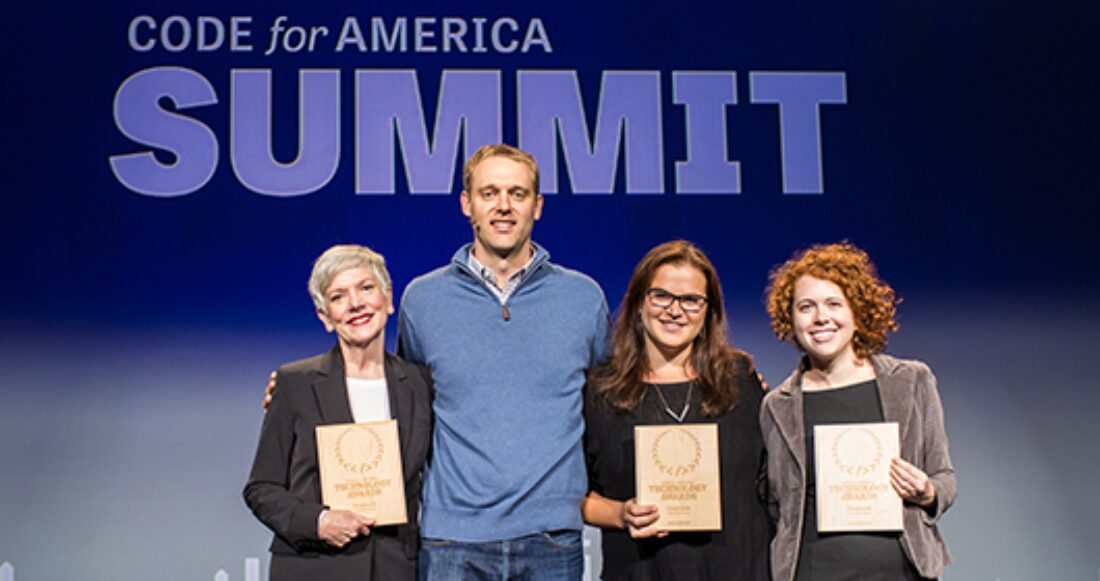Casebook's Unique Features Garnering Attention and Awards

This is the last in a four-part series about Casebook, a state-of-the-art tool to help child welfare workers track and improve results for children in their care. This installment looks at the successes of the Casebook team in bringing the platform to market.
Part 4: Accomplishments
Casebook can be accessed from any computer or mobile device, and it allows child welfare caseworkers to capture all of the data required as part of the Adoption and Foster Care Analysis and Reporting System and the National Child Abuse and Neglect Data System. But it goes well beyond just documenting cases to include, among other features:
- A view of families and cases to help caseworkers and supervisors understand history and context quickly;
- Graphic visualizations to help users “see” family networks and manage complex relationships;
- Support for virtual case collaboration to reduce phone and travel time, minimize data loss and encourage information sharing;
- Alerts, notifications and progress status indicators that help keep case management efforts on track;
- A placement-matching tool that helps caseworkers place children in care in the most appropriate setting and family;
- Access to dashboard metrics that help caseworkers prioritize their work based on real-time data and allow supervisors to effectively manage their teams; and
- Extensive resources for self-guided online help, as well as hands-on consultation with Case Commons staff to implement the system and work through issues.
Two hallmarks of the system are “iteration” — a process to continually evaluate, forecast for changes and allow for improvements — and user-centered design. When Casebook was introduced in Indiana, the Case Commons team shadowed people in the child welfare system “so that we could understand the day-to-day behavior of the end users,” notes Nicole Tecco Reese, chief product officer at Case Commons. “This was a very different way of developing technology in the government sector.”
In the time that Casebook has become available, only two other states, Michigan and Delaware, have procured new child welfare technology systems, both using mainstream legacy system providers. In both states, these systems have been costly and plagued by glitches and delays.
“The fact that Casebook even was built and today supports the Department of Child Services in Indiana is a major success,” notes Heather Weston, chief operating officer at Case Commons. “It wasn’t easy, but we demonstrated that you can have a tool that can serve the needs of frontline workers, capture higher quality data, provide leaders with what they need to make better decisions and do it in way that is more efficient.” Case Commons also has made it easier for states to invest in Casebook in modules, rather than committing to the whole system immediately.
Negotiations are underway in other states interested in reaping Casebook’s benefits, and two prestigious awards have bolstered its visibility. Casebook landed a UX Magazine Design for Experience award — taking the podium alongside outfits like Airbnb, BBC Live and Citrix — in the public sector category. And Case Commons received an inaugural Code for America technology award as one of a dozen national organizations helping to use modern technology to improve government services.
“The appetite in states to use analytics to drive results is quite significant,” says Steve Goldsmith, Daniel Paul Professor at Harvard University’s Kennedy School of Government. The former Indianapolis mayor writes and presents frequently for state and local officials on the value of data analytics — and specifically Casebook’s model—in governance.
With a staff of just 50, Case Commons runs a lean operation that fosters flexibility and innovation. But it has been challenging, notes Charles Simon, Case Commons general counsel and director of policy, “when the other players are incredibly large multinational organizations with lots of name recognition and credibility.” However, Case Commons’ expertise in child welfare — built in part on the Casey Foundation’s 25 years of work to spur child welfare reform — has paved the way for possible collaboration with other technology providers.
“Our hope is that we might fundamentally change the market so not just Casebook but other products will be developed to better serve this market,” says Tecco Reese.
In Indiana, the ultimate payoff is helping kids. “You have a [state] government agency that understands the importance of protecting children at the highest level, you have visionary people who want it to be as good as it can be, and a never ending process of improvement,” says Jane Bisbee, deputy director of field operations for the department of child services. “You are hedging your bet that your outcomes for children are going to be better.”





